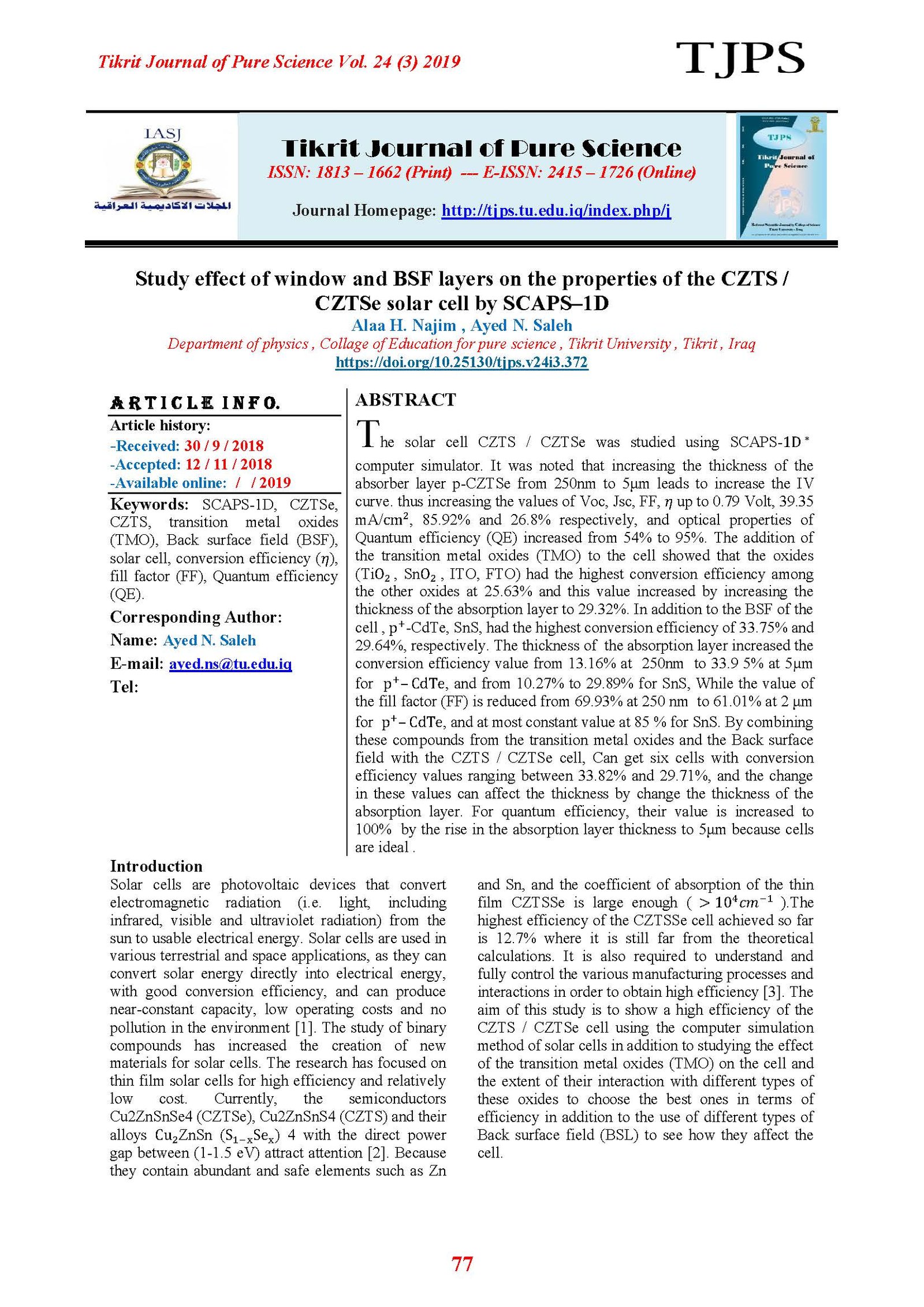Study effect of window and BSF layers on the properties of the CZTS / CZTSe solar cell by SCAPS–1D
Main Article Content
Abstract
The solar cell CZTS / CZTSe was studied using SCAPS-1D * computer simulator. It was noted that increasing the thickness of the absorber layer p-CZTSe from 250nm to 5μm leads to increase the IV curve. thus increasing the values of Voc, Jsc, FF
Article Details

This work is licensed under a Creative Commons Attribution 4.0 International License.
Tikrit Journal of Pure Science is licensed under the Creative Commons Attribution 4.0 International License, which allows users to copy, create extracts, abstracts, and new works from the article, alter and revise the article, and make commercial use of the article (including reuse and/or resale of the article by commercial entities), provided the user gives appropriate credit (with a link to the formal publication through the relevant DOI), provides a link to the license, indicates if changes were made, and the licensor is not represented as endorsing the use made of the work. The authors hold the copyright for their published work on the Tikrit J. Pure Sci. website, while Tikrit J. Pure Sci. is responsible for appreciate citation of their work, which is released under CC-BY-4.0, enabling the unrestricted use, distribution, and reproduction of an article in any medium, provided that the original work is properly cited.
References
[1] Sze, S.M. (2007). Physics of Semiconductor Devices. 3th edn., library of Congress Cataloging, The United states of America.
[2] Fella, C.M.; Romanyuk, Y. E. and Tiwari, A.N. (2013). Thin-film Photovoltaic Solar Cells. Solar Energy Materials and Solar Cells, 119 (1): 276–277.
[3] Sayed, M. H.; Schoneberg, J.; Parisi, J. and Gutay, L. ( 2017). Improvement of the structural and electronic properties of CZTSSe solar cells from spray pyrolysis by a CuGe seed layer. The Royal Society of Chemistry, 7 ( 3 ) : 20406 – 20411 .
[4] Amu, T.L. and Loreta, T. ( 2014 ). Performance optimization of TIN halide perovskite solar cells VIA numerical simulation. 1th edn., African University of Science and Technology: Abuja.
[5] Zhai, H. J. and Wang, L. S. (2002). Electronic structure and chemical bonding of divanadium - oxide clusters (
